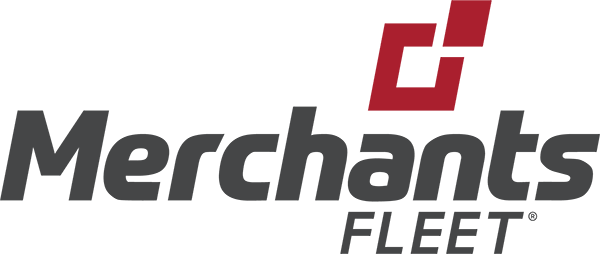Open-End vs. Closed-End Leases [+5-Point Comparison]
Commercial vehicle leasing is arguably the ideal acquisition method for many businesses. From lower initial costs to flexible terms, leasing offers both short and long-term benefits that are not available under ownership. However, these benefits are only realized after choosing between two operating lease structures: open-end vs. closed-end leases.
Use the information below as a starting point to determine which lease is right for your business.
Open-End Leases
Closed-End Leases
Open-End Leases vs. Closed-End Leases Comparison
Sale Leaseback Programs
New Lease Accounting Rules
9 Factors to Consider When Choosing a Leasing Structure
Open-End Leases
Open-end leases have flexible structures that are as close to vehicle ownership as possible, only with the additional benefits of leasing.
The terms include a minimum 12-month lease — technically, 367 days — followed by a month-to-month structure. There are no mileage restrictions or penalties, and the vehicle(s) can be returned at any point after the minimum term has lapsed.
Terminal Rental Adjustment Clause (TRAC)
You are responsible for the book value of the vehicle under an open-end lease, which is where a Terminal Rental Adjustment Clause (TRAC) comes in.
TRAC adjustments are a common point of confusion for many lessees. According to Automotive Fleet, a TRAC is “an arrangement featuring a final rental adjustment on the lease which occurs after the vehicle is removed from service and sold.” A TRAC is a great way to manage cash flow for a specific vehicle.
An open-end lease with a TRAC allows a rental adjustment against the vehicle’s outstanding book value at the end of the lease. You can return the vehicle and either receive a credit or a bill for the difference between what you owe and how much the vehicle is sold for.
If a vehicle is over-depreciated, you will receive a positive rental adjustment at the end of your terms. If the vehicle is under-depreciated, there will be a negative rental adjustment at the time of termination. Here are a few examples:
Positive Rental Adjustment
If you return a vehicle and owe $5,000 but the residual value of the vehicle is $6,000, you will receive a $1,000 credit.
Negative Rental Adjustment
If you return a vehicle and owe $5,000 but the residual value is only $3,000, you will be billed $2,000.
Benefits of Open-End Leases
- Flexibility: Return the vehicles whenever it makes the most sense for your business and adjust vehicle use without incurring mileage penalties. If territories change or your business scales back, you do not have to worry about over-mileage fees or vehicle rearrangements.
- Ideal for Heavy Usage: An open-end lease does not set parameters around damage, which makes it the ideal option for fleets with high mileages or that operate in off-road environments. If your business uses light and medium-duty trucks, utility vans, or specialized equipment, an open-end lease will help you avoid costly fees.
Closed-End Leases
Open-end leases are a popular option because of their flexibility, but closed-end leases can be a better choice for fleets that have low mileages and want predictable payments.
Closed-end leases set fixed terms, mileage allowances, and return dates before the vehicles are put into service. You will be locked into the agreed-upon stipulations, and there are penalties for turning in vehicles early or going over the mileage allowance.
The condition of the vehicle at the time of its return is also defined in a closed-end lease. The contract will state the amount of damage allowed, and you will be charged at the end of your terms if it is more extensive than the lease allows.
“The economics of a closed-end lease payment usually make sense when driver mileage is predictable,” said Tom Coffey, vice president of sales and marketing for Merchants Fleet. The lower the mileage you need for a vehicle, the lower the payment will be under a closed-end lease.
Benefits of Closed-End Leases
- Predictable Payments & Low Risk: At the end of a closed-end lease, you simply walk away and are not responsible for any residual value like under an open-end lease with a TRAC. Closed-end leases are fixed, predictable, and do not hold you responsible for the residual value of a vehicle.
- Lower Costs in Certain Cases: If your fleet requires low, predictable mileage, a closed-end lease can be a very affordable option. Executive vehicles are often under a closed-end lease because their mileage tends to be low and predictable.
Open-End Leases vs. Closed-End Leases Comparison
Below is a snapshot look at the differences between open and closed-end leases.
| Open-End Leases | Closed-End Leases | |
| Structure | Flexible Terms, Mileage Allowances, and Return Dates | Fixed Rates, Terms, Mileage Allowances, and Return Dates |
| Expenses | No Penalty Fees | Lower, More Predictable Costs But Penalty Fees Are Possible |
| Risk | Higher Risk if the Asset Depreciates at the End of the Terms | No Residual Risk for the Lessee |
| Key Benefits | Flexibility That is Similar to Ownership, with Added Leasing Benefits | Predictable Payments, Low Risk, and Low Costs |
| Ideal For | Heavy Use Fleets That Need As Much Flexibility as Possible | Fleets with Consistent, Predictable Mileage |
Sale Leaseback Programs
If you are already leasing your vehicles through one provider or bank and are looking to migrate your fleet to a different provider, you can do so through a sale leaseback program.
Under a sale leaseback program, the leasing provider or fleet management company of your choice will purchase your vehicles from your current provider and then lease them back to you.
Why go through a sale leaseback program? This allows you to make a clean break from your existing provider and is an advantageous way to consolidate your fleet under one roof. With everything from monthly payments and communications to technology and services handled by the same provider, you can then streamline your fleet operations.
Open-end leases can be easily transferred through a sale leaseback program. However, this process is not always the best option for vehicles under closed-end leases because of the steep termination penalties.
Own-to-Lease Programs
If you own your fleet, you can also have a leasing provider purchase your vehicles to then lease them back to you. This is another way to consolidate your fleet under one provider, and it helps unlock equity. The leasing provider will purchase your vehicles at fair market value, and you will receive the exchange.
New Lease Accounting Rules
The Financial Accounting Standards Board (FASB) defined new lease accounting rules in 2018. The new standard, known as ASC 842, represents the largest change in lease accounting in over 40 years.
The most recent updates state that leases 12 months or less can remain off balance sheets. Leases greater than 12 months must be classified under the lease criteria rules, although operating and capital leases must be reported on the balance sheet. The terms and structure of your leases will drive the actual impacts to your organization. It is important to make sure to work with your accounting team when leasing so that they can gauge actual impacts to your organization and determine whether leases should be reported on or off the balance sheet.
Public companies were required to implement the new accounting rules by 2019. FASB recently pushed back the deadline for private companies and nonprofits to December 2021, due to the COVID-19 pandemic. Even with the recent reprieve, it remains important to stay prepared for implementation, as it can be a complex and time-consuming process.
Merchants Fleet successfully adopted ASC 842 in 2019, tackling both the impact of 842 as a lessor and as a lessee. Your fleet management partner should be able to provide information and have discussions with you and your accounting team to help answer any questions about your leases.
Disclaimer: Any discussions with Merchants Fleet about ASC 842 leasing is based on our interpretation of the accounting changes. All customers should review the lease accounting requirements with their accounting department and/or external accounting CPA firm for any and all accounting guidance.
9 Factors to Consider When Choosing a Leasing Structure
The leasing structure that is best for your fleet will depend on nine key factors:
- Mileage: What is the typical and expected mileage for your vehicles?
- Driving Terrain: Will your vehicles be driven on highways or off-road?
- Usage Patterns: Do you expect your vehicles to experience a lot of wear and tear?
- Cash Flow & Monthly Payments: How much predictability do you need?
- Risk Assessment: What is your comfort level with risk around TRAC clauses and under-depreciation?
- Number of Vehicles: How many vehicles will be under a lease?
- Flexibility Needs: How important is the ability to change routes and add or remove vehicles?
- Customization: Do you plan to hold on to your vehicles long-term because of upfitting and branding?
- Level of Involvement: Will you be managing your fleet in house or with the help of a fleet management company?
Every business is different, and the answer to the open-end lease vs. closed-end lease debate will depend on your specific use case. Fleet management companies specialize in analyzing the factors listed above to help you find the right leasing structure that minimizes unexpected fees and maximizes flexibility.
Our fleet experts can help. We will review your company’s fleet history and define a fleet solution that is tailored to your needs. Contact us today for a free fleet assessment.




